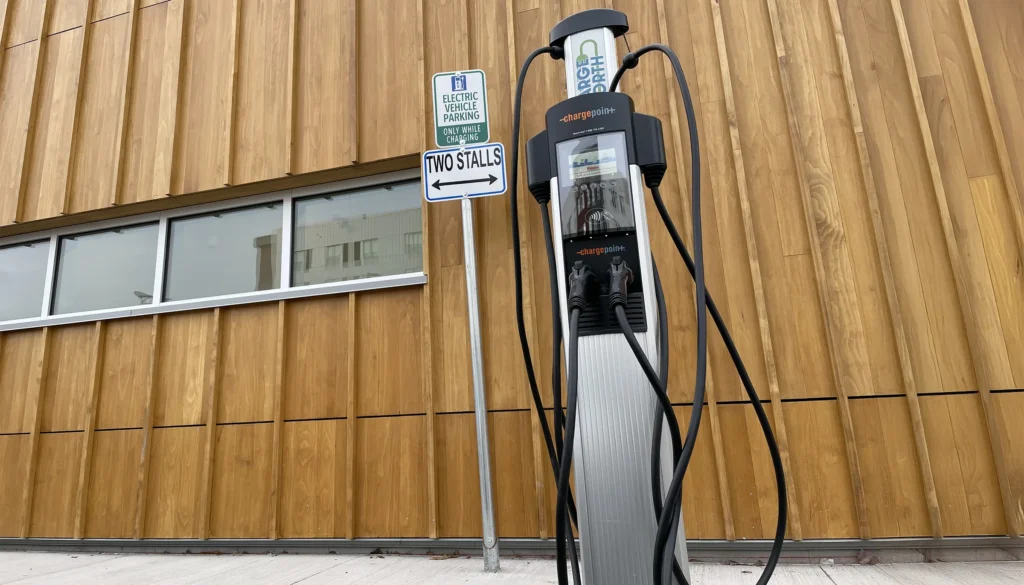Mobility
Transportation is the single largest source of greenhouse gas emissions in British Columbia. In many municipalities, passenger vehicles, trucks, and goods movement are major contributors. Fortunately, local governments have the authority to help shift transportation systems using practical, enforceable tools.
Several regulatory pathways are available to support climate action in the mobility sector—particularly by expanding electric vehicle (EV) charging infrastructure and promoting sustainable transportation options. This section offers guidance on how municipalities can use tools like bylaws, covenants, and development agreements to accelerate the transition to EVs, grow charging infrastructure, and support alternatives like car sharing.
Objectives for advancing climate action in mobility

EV-ready building requirements
Installing EV charging in multi-family buildings after construction can be costly and technically difficult—especially in underground parking. By requiring EV readiness or charging infrastructure upfront, local governments can avoid expensive retrofits, promote equitable access to charging, and support the shift to electric vehicles.

Curbside charging
Curbside EV charging stations, typically located in the public right-of-way, provide charging that is accessible and available to the public. These stations are especially important in high-density areas and near multi-family buildings, where private parking and charging are limited.

Car sharing
Car sharing is a car rental service that allows people to use vehicles for short periods of time, often by the hour. It can be an economical and eco-friendly option for those who only need occasional access to a vehicle. Local governments may want to enable car sharing in large new developments to support mode shift and reduce car ownership as part of a broader transportation demand management strategy.